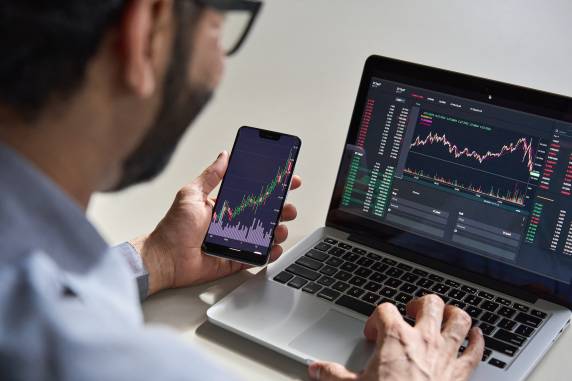By: | Updated: Jun-23, 2022
The stock market has been volatile in recent months with the S&P 500 now down nearly 19% from record highs in early January, Forbes Advisor reports. While both investors and traders aim to profit from the stock market, they employ different strategies to do so. The prime difference between trading and investing is the latter involves long-term holding periods regardless of market fluctuations, while the former aims for larger, short-term profits.
What’s investing?
The contents of the Difference.guru website, such as text, graphics, images, and other material contained on this site (“Content”) are for informational purposes only. The Content is not intended to be a substitute for professional medical or legal advice. Always seek the advice of your doctor with any questions you may have regarding your medical condition. Never disregard professional advice or delay in seeking it because of something you have read on this website!

With investing, the aim is to build long-term wealth over time through a host of different investment instruments, including stocks, bonds, mutual funds, and ETFs. Investing isn’t a get-rich-quick strategy; investments are typically held for years, potentially decades, and grow in value thanks to compounding interest, dividends, and stock splits. Even when the market dips, investors hold fast as prices are expected to eventually rebound without any losses. Investing can even be as simple as holding a 401(k) or an IRA: retirement accounts that take decades to grow with no need to track fluctuations in value on a daily basis.
What’s trading?
In contrast, trading is all about frequent transactions (namely buying and selling stocks) and short-term profits. Whereas investors may settle for annual returns of between 10%-15%, traders seek bigger returns in a shorter time frame — a 10% return per month, for example. Protective stop-loss orders are also often used to set predetermined exit prices and prevent losses. Traders can choose from a number of styles depending on their experience and risk tolerance, as well as how much time they’re able to actually devote to trading. Scalp traders hold positions for seconds to minutes, day traders hold positions throughout the day, swing traders hold day to week-long positions, and position traders hold positions spanning from months to years.
How to trade and invest wisely
Whether you opt to trade or invest, stock-picking services can provide you with recommendations on certain stocks likely to outperform the broader stock market. Motley Fool Rule Breakers, for example, is a subscription-based, stock-picking service that centers around high-growth stocks backed by undervalued or promising new companies. With tailored, expert recommendations, you’re in the best position possible to beat the market.
So, if you’re looking to invest over the long-term, consider your goals (for example, are you saving for retirement?) and determine how much risk you can tolerate. You can then create an investment plan for buying, selling and rebalancing your portfolio — some investors, for instance, buy holdings, while selling others to keep their portfolio on track with their goals after a bout of market volatility. Alternatively, if you’re looking to start trading, devise a plan outlining when to buy and sell and stick to it. You may choose to sell a stock if it falls by a certain percentage, for example. It’s also important to determine how much money you can afford to lose. Be careful not to trade any more than that.
Trading and investing both involve profiting from the stock market, although they go about it in different ways. By researching your options and making smart moves, you’ll be able to make either trading or investing work for you.
(Visited 95 times, 1 visits today)





